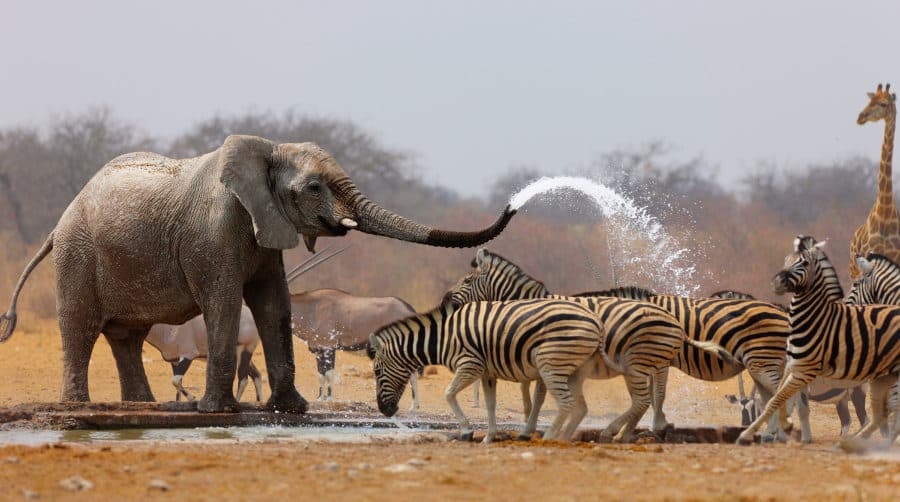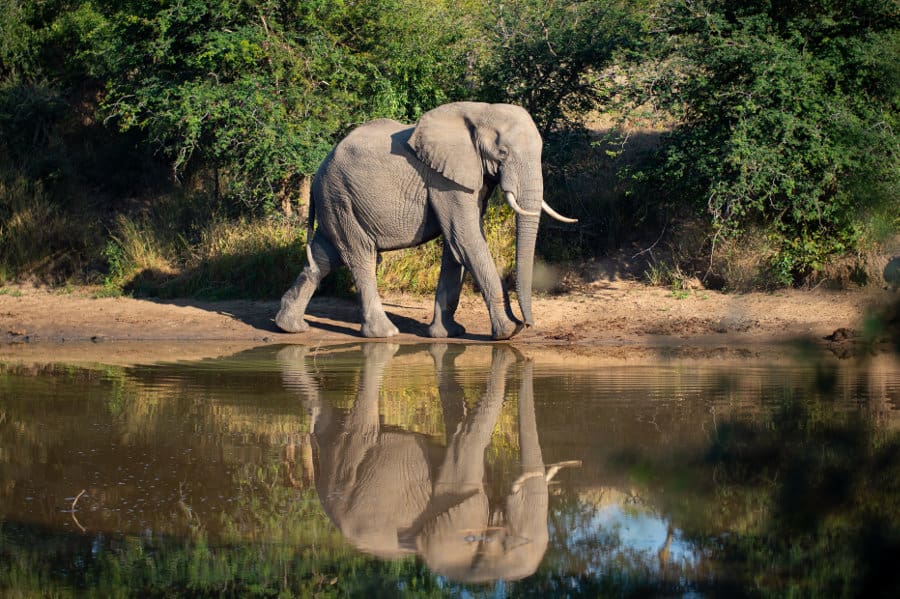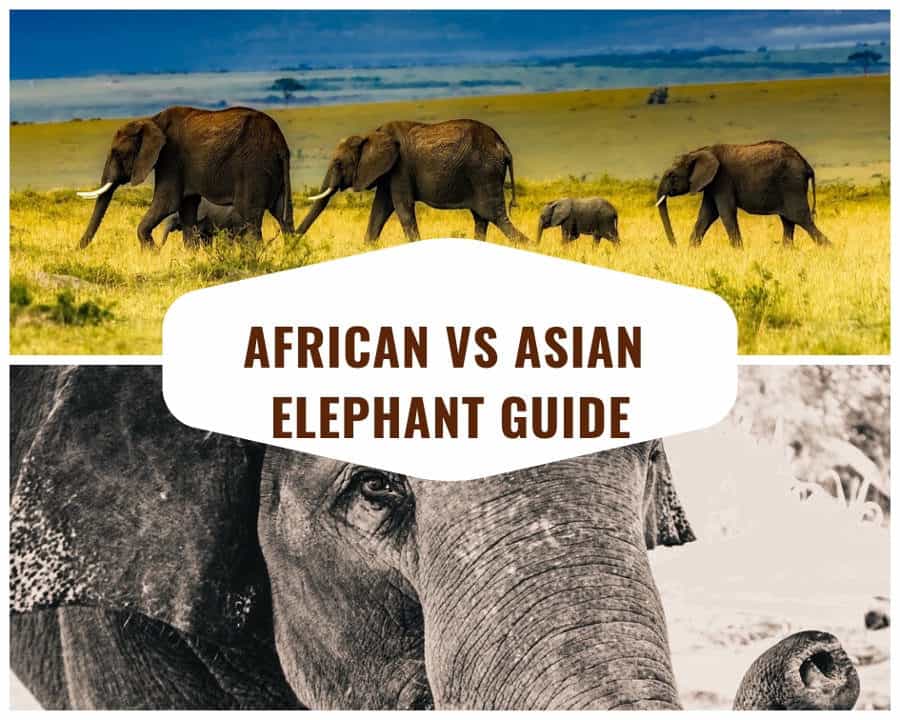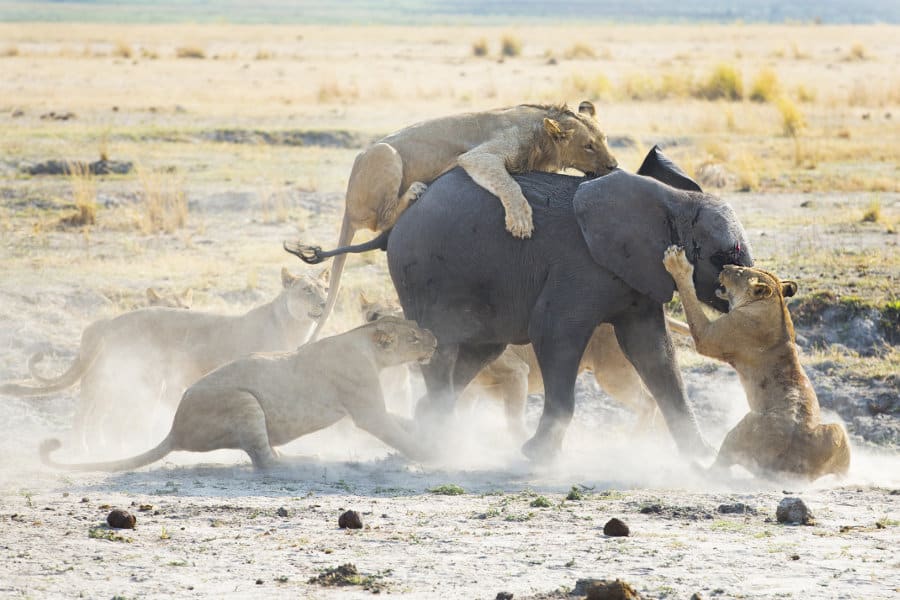Well, you are not going to believe this, an elephant trunk is home to a whopping 40 000 muscles!
Yes, that’s right, this mighty trunk pushes and pulls trees straight out of the ground.
Yet an elephant trunk is so flexible it’s been known to paint pictures as well!
The extraordinary elephant is the largest land mammal to walk the African savanna.
Elephants are extremely wise and intelligent creatures, yet they are also very emotional and delicate. But where did that weird and wonderful trunk originate from? And why is it so long?
Keep reading for the full story on how many muscles are in an elephant’s trunk.
Why do elephants have trunks?
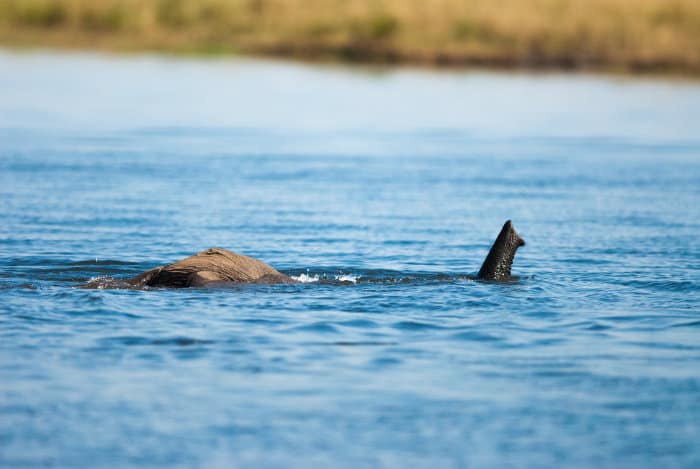
Elephants use their trunks for a number of fascinating reasons. The most incredible fun fact about the elephant trunk is that it is used for snorkelling. Yes, you heard right, an elephant can swim underwater without needing to holding its breath.
What’s fascinating is that elephants use their trunks to catch a breath, by popping out the tip of the trunk above the water. So while bulky bodies are not very buoyant, they can sink and still swim!
African elephants have a special lung tissue that is much denser than other mammals. This allows them to withstand the pressure of being underwater while walking along riverbeds, with their trunks as snorkels.
Thanks to 40 000 muscles in an elephant trunk, these giants can also perform many other unique functions.
They use their trunks to dig into dry riverbeds and unearth hidden water sources. Captive elephants have been trained to paint with their trunks.
Such a flexible body part isn’t just for party tricks. Without a trunk an elephant will struggle to fulfill daily tasks.
Ideal for feeding time
The main benefit of an elephant’s trunk having 40 000 muscles is eating and drinking. Elephants consume up to 140 kilograms of food and 190 litres of water every day. So what a busy trunk it is!
They don’t move their heads to eat and drink.
Instead they just let their trunk stretch out, using all 40 000 muscles to reach treetops and fresh leaves other animals cannot reach. So they only share their food with their African savanna friend, the gentle giant giraffe.
Did you know that an elephant can’t jump?
Their trunk really does do all the work!
Elephants enjoy strolling the savanna browsing on tree leaves, twigs and wild fruits. Thanks to all the muscles in their trunk, they can also graze and pull enormous clumps of grass and bamboo from the ground.
The efficient elephant uses wide teeth to grind down food into a pulp before swallowing.
At the same time, the trunk continues its search for food, passing trunkful after trunkful to the mouth for continuous gorging. Talk about efficient eating!
An elephant trunk has mighty muscles
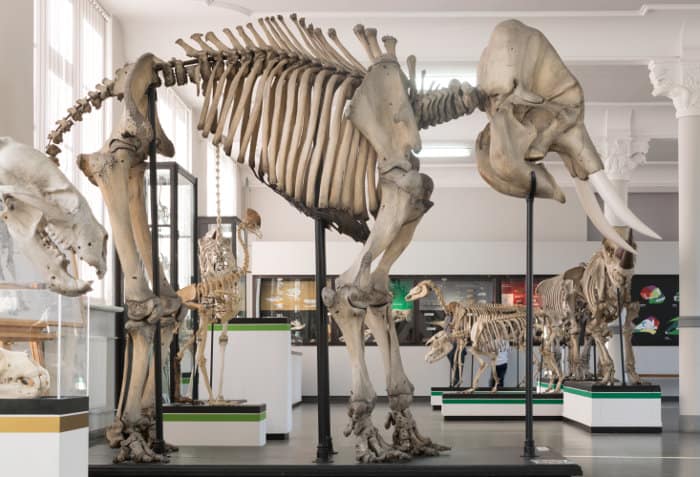
Surprisingly, there are no bones inside an elephant’s trunk. An elephant’s skeleton is bizarre to look out because the trunk is not visible.
However, there are eight main muscles on either side of the trunk, which hold together the other 39 992 muscles. To put this into perspective, human bodies only have 640 muscles.
This gives us an idea of complexity. An elephant trunk has 40 000 muscles, that’s 60 times more muscles than the human body! And we think we are an evolved species!
How much does an elephant trunk weigh?
The elephant trunk is phenomenally powerful and grows up to 2 meters in length, weighing a whopping 140 kilograms. That’s double the average human weight, woah!
Despite the trunk’s power, it is a very delicate and sensitive part of the body. A trunk consists of an elephant’s upper lip and nose, a long leathery hose full of muscle, plus two nostrils at the end.
Also, let’s not forget the elephant trunk also has finger-like tips at the end for grasping objects!
African elephants have two tips at the end of their trunks, whereas Asian elephants only have one. This is one of the many differences between African and Asian elephants.
Have no fear, the elephants are here!
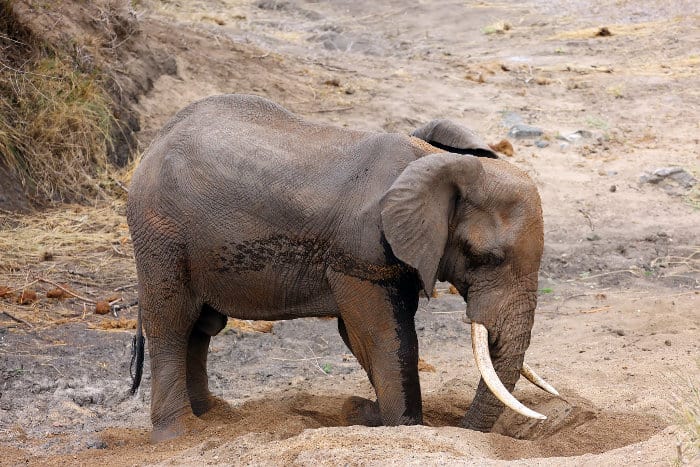
When the dry season hits it creates difficult times for animals. But have no fear, the elephants are here!
Elephants are intelligent creatures and understand that their diet must change to meet their new environment. Elephants will go in search of water, using their trunks to smell out water sources up to 19 kilometres away.
Now, this is where their tusks come in handy. Once they have located a water source, the elephant begins to churn the ground to create hollow caverns.
Then it digs as deep as several meters using its trunk. Eventually the water bubbles up, so a mother can help dig out water for an infant.
This churning elephant technique also creates access to salts and minerals from the earth, dietary supplements they may not be getting elsewhere during the dry season.
Another bonus to this elephant trunk procedure is making water accessible to other animals. How considerate!
What other animals have trunks?
Can you think of any other animals with a trunk?
Well, you may be surprised to find that two other animals have trunks with muscles.
The anteater, of which there are four species, has a trunk which extends from its head. The anteater inhabits Central and South America and is commonly known for eating termites and ants (obviously 🙂 ).
The second animal with a trunk is a tapir, which inhabits jungles and forests mainly across the Americas and Southeast Asia.
The tapir is a large, herbivorous mammal in the shape of a pig. It has a short, prehensile trunk which is an extension of the nose and upper lip, similar to the elephant.
However, tapir and anteaters have fewer trunk muscles than the mighty elephant.
Elephants are endangered
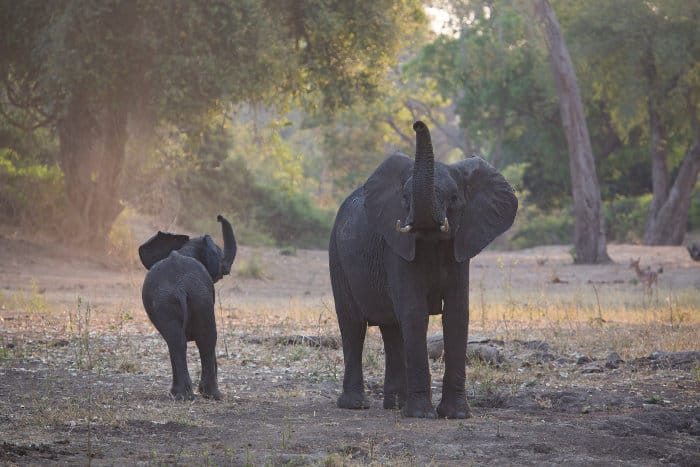
It is sadly and widely known that the elephant is endangered and at risk of extinction.
Can you imagine a world without elephants?
The illegal ivory trade is huge and the value of ivory outweighs the value of gold. Poachers want to be in possession of an elephant’s beautiful ivory tusk, because of the rarity and value they hold.
But, the elephant holds much greater value to our planet. They are a keystone species playing a major part in the circle of life, dropping dung and spreading seeds across the savanna. Surely that’s more important than an ivory sculpture?
The elephant trunk is an incredibly versatile tool, used for breaking and snorkelling, touching and grasping objects, as well as smelling and producing sound.
The tremendous trunk has 40 000 muscles and it’s one of the world’s weirdest yet most fascinating bodily features.
Let’s hope these beautiful creatures share our land for millions of years to come. You can do your bit by going on an African safari – every safari provides money to preserve ecosystems and keep the wilderness free for animals like elephants.
